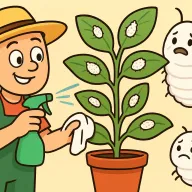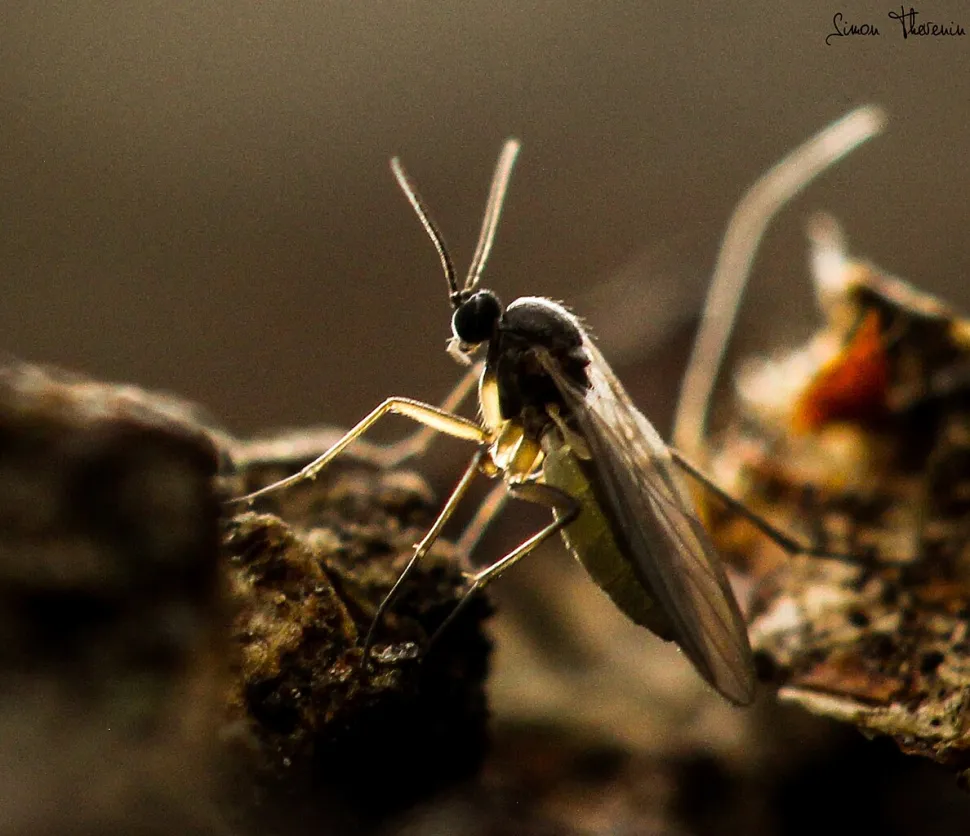
How to get rid of soil gnats?
Article for :Beginner and plant killerExperienced plant lover
Have you noticed tiny black flies hovering around your favorite Monstera deliciosa? Is the pot of your Syngonium podophyllum host to curious little greens? Your houseplants have undoubtedly fallen victim to a sciarid attack. Don't panic, we'll show you how to get rid of soil midges.
How to recognize gnats in houseplants?
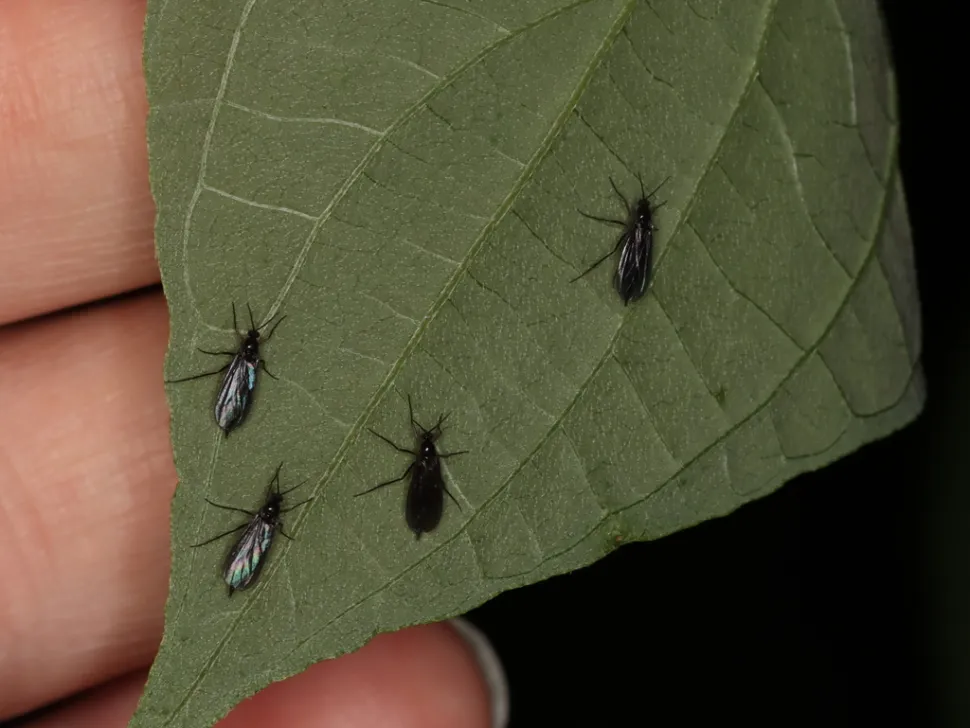
Close-up of the culprit - Photo by Simon Thévenin / Wikipedia
Potting midges, also known as soil flies, are black or gray insects measuring between three and four millimeters. They have long legs and translucent wings.
They live for just ten days. But they reproduce rapidly. During its short existence, a female can lay 150 eggs. These eggs give rise to translucent larvae measuring around five millimeters.
The soil midge's scientific name is sciarid. This term covers dozens of insect species belonging to the Sciaridae family.
Sciarid flies are attracted to warm, moist environments in which to bury their eggs. This is why gnats are often found at the foot of houseplants, and larvae in their substrate.
Are midges harmful?
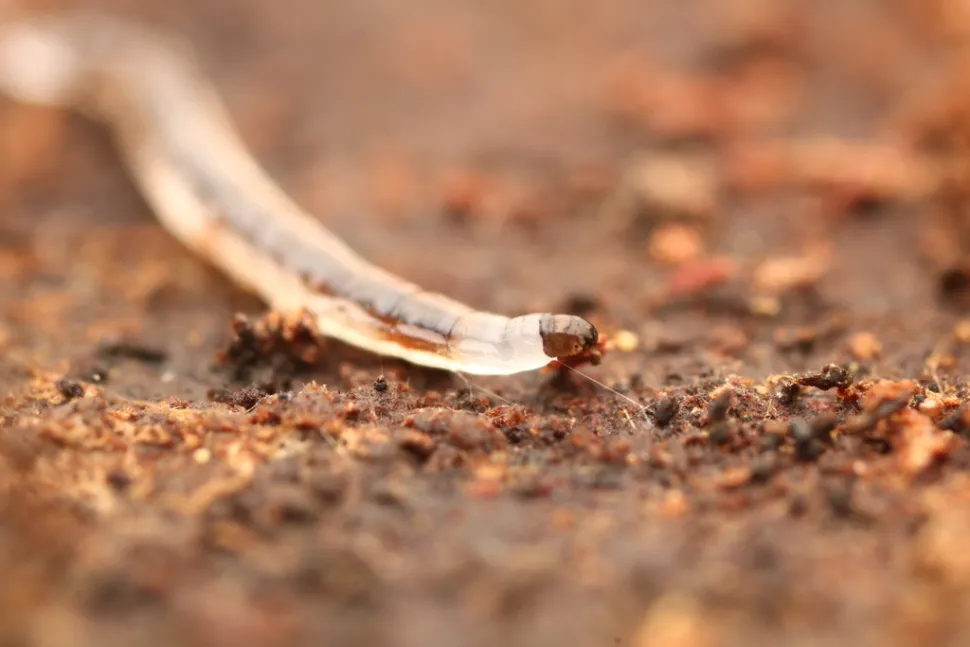
Larvae are a danger to your plants - Photo by Jake McCumber /iNaturalist
In nature, certain species of midges are involved in plant reproduction and multiplication. The adult insects act as pollinators. But their presence can also be problematic.
Adult male gnats pose no danger to your houseplants. It's the females, who lay the eggs, and the larvae that cause problems. The larvae feed by eating plant roots. They also dig galleries in bulbs and stems. This affects the plant, which stops growing, wilts and eventually dies.
How to prevent the appearance of potting soil flies?
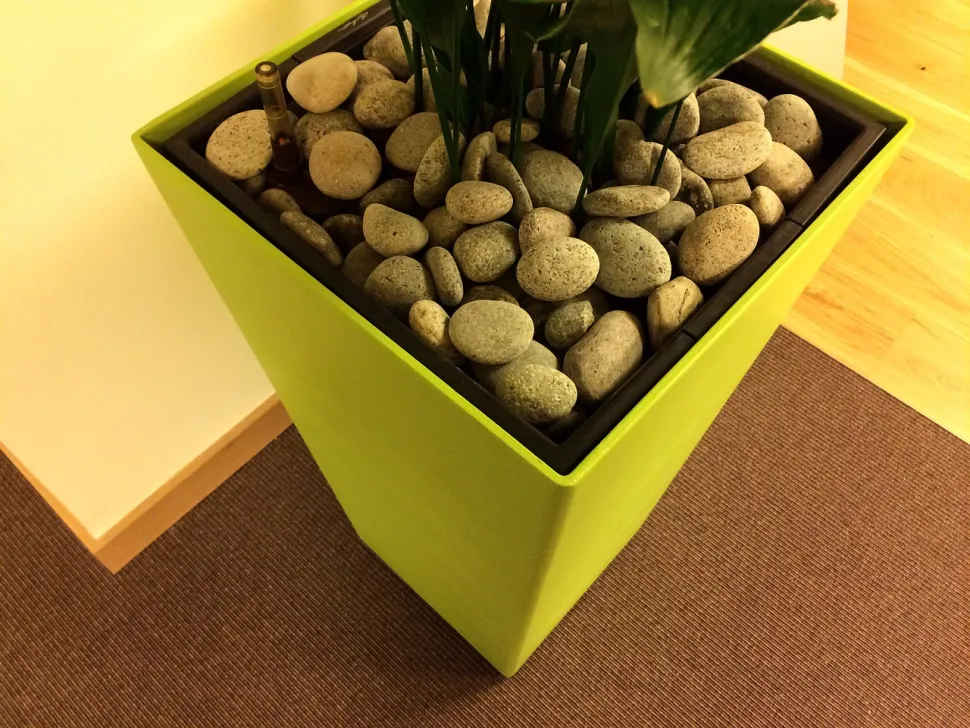
Blocking access to potting soil is a radical but effective solution - Photo by Didgeman / Needpix
Potting flies love humidity. Empty the water stagnating in the saucer and planter to keep them away from your houseplants.
Remove any plant waste (dead leaves, wilted flowers, dry stems) that may be clogging up the potting soil. As they decompose, they attract sciarids.
Finally, you can prevent midges from laying eggs in the substrate by making it inaccessible. Cover the soil surface withclay balls or gravel.
You're reading this article too late and potting flies have already invaded your houseplants? Here's how to get rid of them.
Five effective ways to get rid of potting midges
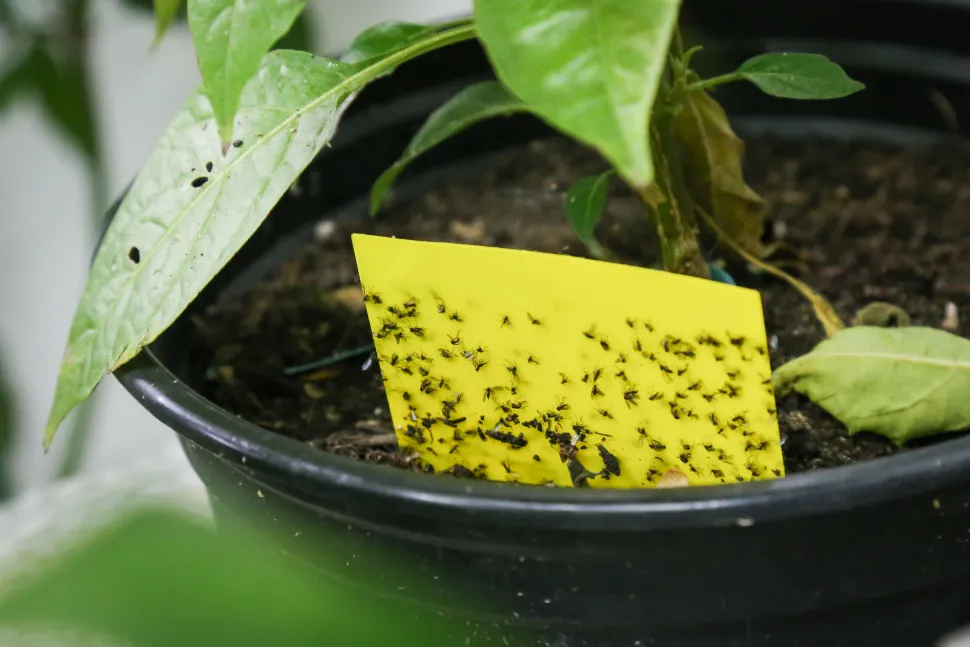
The yellow sticky trap - it's ugly, but it works - Photo by Maja Dumat / Flickr
Cinnamon, cloves, cider, vinegar, diatomaceous earth... There are many natural remedies available online to get rid of gnats. The effectiveness of these tricks is far from unanimous, and their results are uncertain. When your plants are infested, try one of these solutions instead.
If your plant is not (too) afraid of drought, stop watering it for a few days, until the substrate has dried over at least five centimetres. Larvae won't survive in a dehydrated environment and will quickly die out. This natural solution works with cacti, succulents and hardy species such as misery (Tradescantia zebrina), chinese coin plant (Pilea peperomioides) or plant ZZ (Zamioculcas zamiifolia) ZZ plant. However, it is more risky for varieties that need to keep their potting soil moist.
Potting flies are very cold-blooded. They live their best life in our heated interiors, when the thermometer oscillates between 21 and 25°C. If the midge invasion occurs between September and May, take your plants out into the garden or onto the windowsill (provided the outside temperature is above the hardiness limit). After a day or two, the cold should get the better of the larvae.
You can also set up sticky traps at the foot of plants to catch potting flies before they lay their eggs. Some gardeners make their own devices by coating cardboard with glue, honey and corn syrup. But you can also buy sticky traps online. They come in a particular color, but it seems that sciarids prefer yellow.
Biological control and nematodes are an unstoppable weapon in the event of infestation. These microscopic white worms are the natural predators of soil midges. A powder containing millions of nematodes is available for around ten euros. All you have to do is mix it with your watering and let nature do its work. Nematodes are formidable in the face of sciarid invasions, but the commercially available ones pose no danger to houseplants or pets.
Not ready to invite worms into your home to devour larvae? Thenrepotting is the answer. Take your plant out of its pot, remove the old substrate from the roots and repot it in a clean pierced pot lined with brand-new (and gnat-free) potting soil. Not sure which growing medium to use? Download the Monstera application. Our care guides explain which substrate is best for your plants to thrive in.
Potting midges fly from plant to plant. For the treatment to be effective, you need to apply it to your entire jungle. Otherwise, you'll only be displacing the problem.
Can I use soapy water to get rid of gnats?
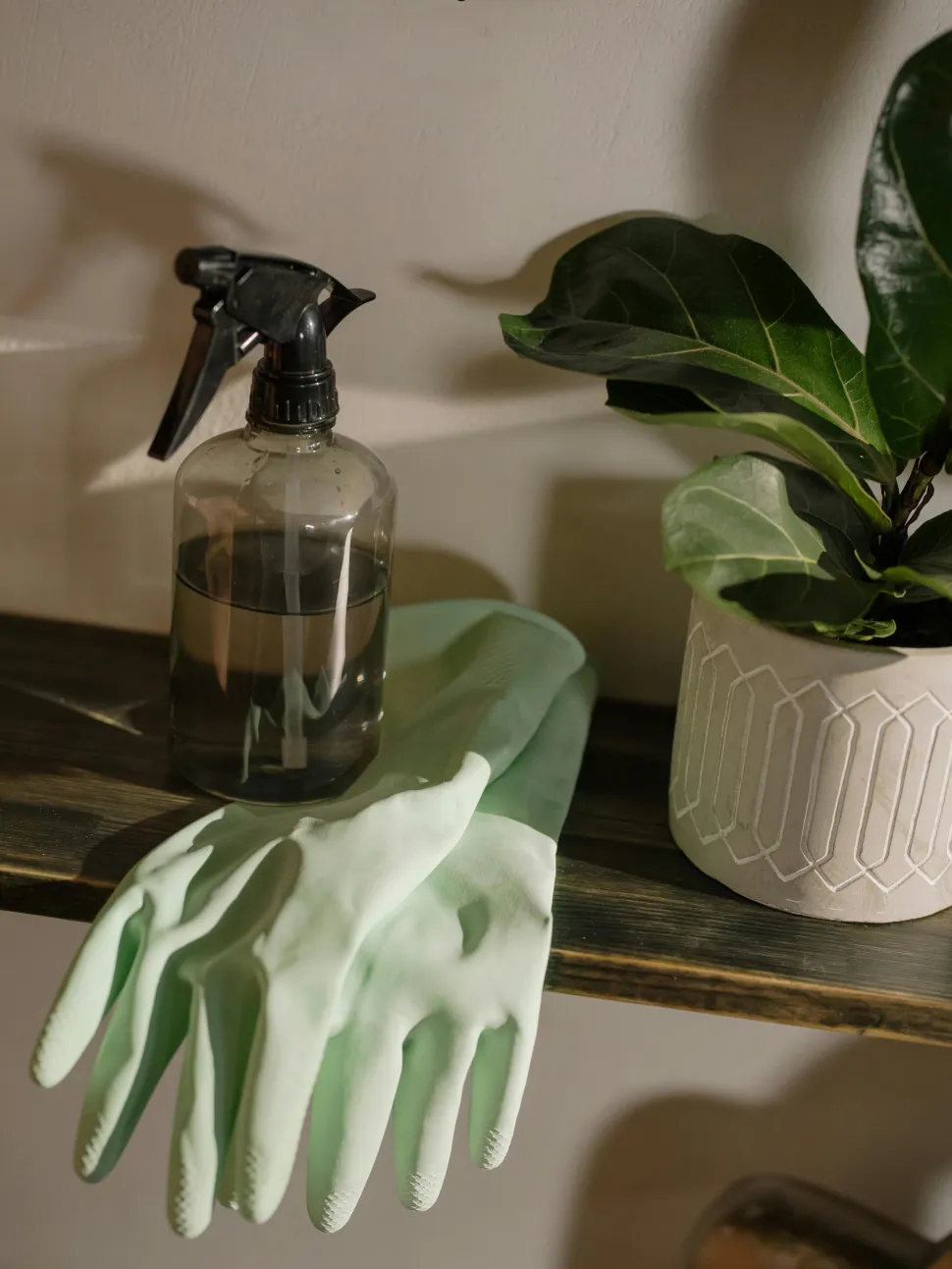
Effective against midges, soapy water can be dangerous for your plants - Photo by Cottonbro Studio / Pexels
Some people recommend spraying a mixture of soap and water (black soap or washing-up liquid) on the plant and substrate to eradicate gnats.
While soapy water is effective in killing sciarid larvae, it is not without danger for plants. Some products, notably washing-up liquid, contain substances that are harmful to plants when released into the soil.
When free of chemical additives, black soap and Marseille soap are more harmless. But they interfere with the absorption of nutrients by the plant and the micro-organisms found in the potting soil.
Are matches effective against potting midges?
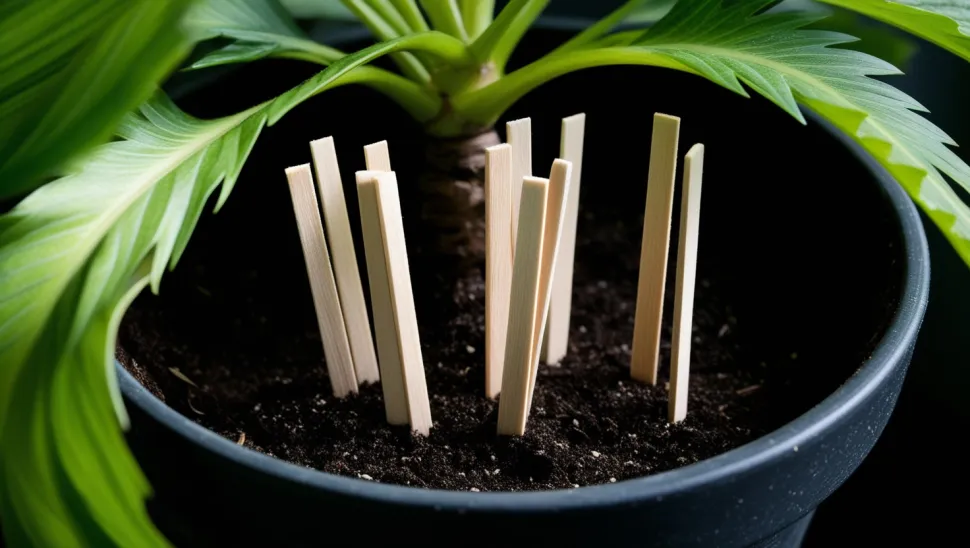
Matches planted in pots are ugly and don't work / AI-generated photo
Rumor has it that planting matches, the flammable part first, in potting soil will eradicate gnats. The reason: the sulfide coating the end of the match would scare away sciarids.
No studies have (yet) been carried out on this subject. But it's highly likely that the amount of sulfide is too small to have any effect on the flies. Matches won't protect your houseplants from invasions of gnats. Nor will they eradicate the larvae already present in the soil.
By Servane Nemetz
on 05-03-2025 at 14h48
on 05-03-2025 at 14h48



